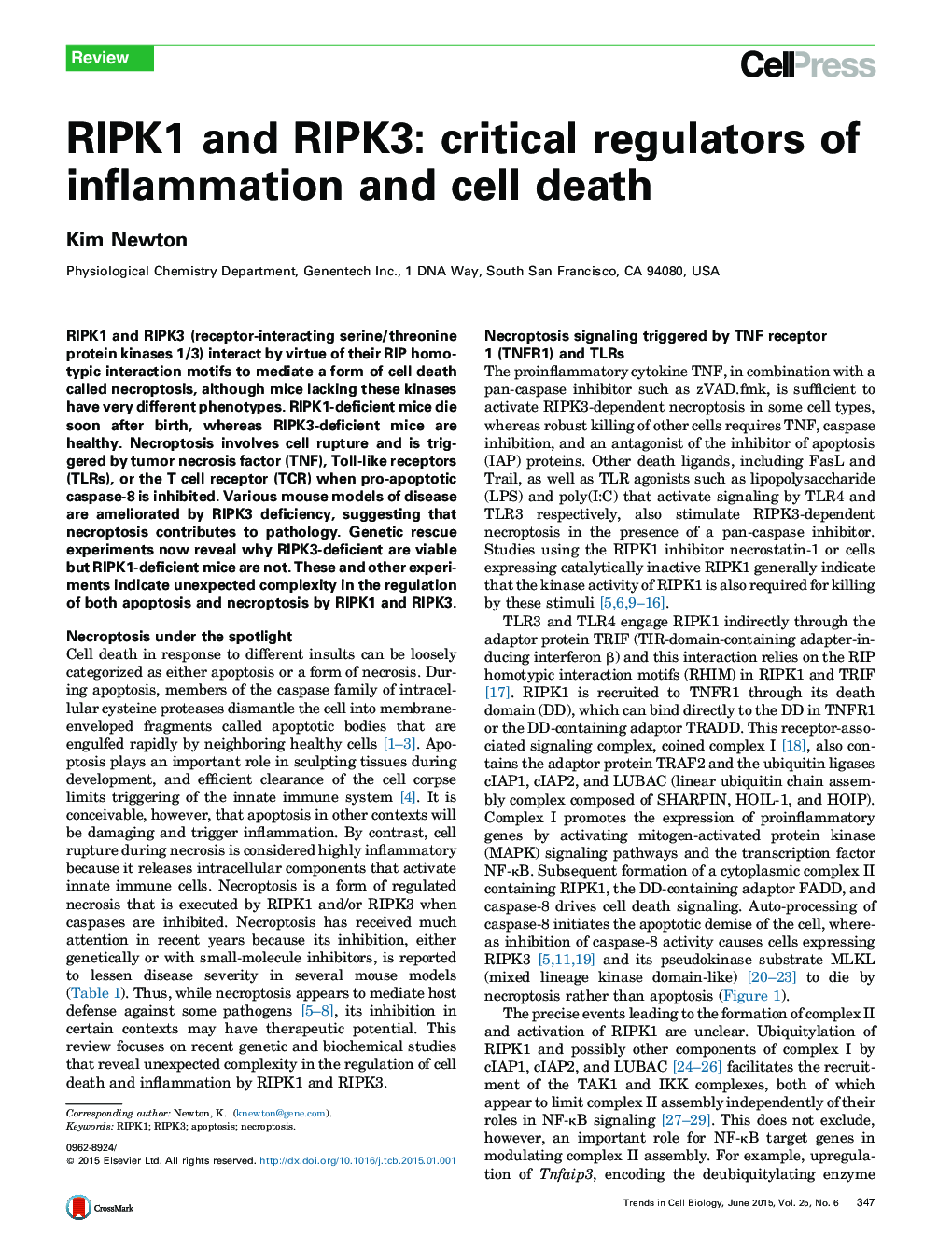| Article ID | Journal | Published Year | Pages | File Type |
|---|---|---|---|---|
| 2204373 | Trends in Cell Biology | 2015 | 7 Pages |
•RIPK1 has a scaffold function that inhibits apoptosis and necroptosis.•The kinase activity of RIPK1 promotes apoptosis and necroptosis.•The kinase activity of RIPK3 promotes necroptosis.•Mutation of the kinase DFG motif in RIPK3 promotes apoptosis.
RIPK1 and RIPK3 (receptor-interacting serine/threonine protein kinases 1/3) interact by virtue of their RIP homotypic interaction motifs to mediate a form of cell death called necroptosis, although mice lacking these kinases have very different phenotypes. RIPK1-deficient mice die soon after birth, whereas RIPK3-deficient mice are healthy. Necroptosis involves cell rupture and is triggered by tumor necrosis factor (TNF), Toll-like receptors (TLRs), or the T cell receptor (TCR) when pro-apoptotic caspase-8 is inhibited. Various mouse models of disease are ameliorated by RIPK3 deficiency, suggesting that necroptosis contributes to pathology. Genetic rescue experiments now reveal why RIPK3-deficient are viable but RIPK1-deficient mice are not. These and other experiments indicate unexpected complexity in the regulation of both apoptosis and necroptosis by RIPK1 and RIPK3.
